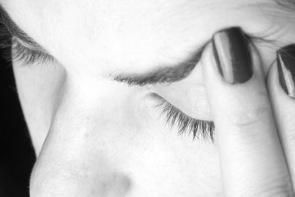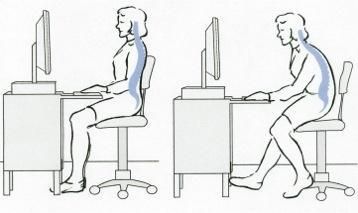Newsletter October 2012
General Wellbeing - The anatomy of a headache
In this newsletter, I'll be looking at a subject that has been in the news recently, due to recent revised clinical guidance on the treatment of headaches. Now I would assume most people in their lives have suffered from headaches at some point, and I would also argue that the use of painkillers to treat them is often the quickest, simplest and most effective way for a short term cure...so does this report now say the opposite?
In short, no...
The National Institute for Clinical Excellence (NICE) issued notice CG150. Click on the link below, if you have the time to read it: (http://publications.nice.org.uk/headaches-cg150), which states that aetiology of the different types of headaches is not well understood and headaches are often not clinically diagnosed. It then goes on to say that there are ostensibly 2 types; Primary headaches (inc. tension headaches & migraines) and secondary headaches (inc. medication overuse & infection).
So what can happen then is that in trying to treat a primary headache you can inadvertently cause a secondary headache. The report then goes on to advise clinical practitioners that a patient's needs should be to be taken in account, along with their personal preference towards treatment. If drugs are used then it advises them to monitor their patients during the first 3 months of treatment to see if the headaches worsen, or become more frequent.
So far so good...But where does this leave a person who is suffering from a secondary headache caused by painkillers, or more importantly a person who doesn't want to take a pill for a primary one?
Provided there are no underlying medical issues that need to be addressed (such as infection etc.) then why not try a complementary therapy instead? You may even find your GP practises western medical acupuncture, so you do not need to pay to try one. (as far as I know this is the only complementary therapy readily available on the NHS).

If you don't like needles, or you find they haven't helped than why not try a Sports Massage? Personally, I've had some great results treating tension headaches sufferers, there are some fantastic advanced soft tissue techniques available for reducing tension in the neck and helping to restore a 'good' general postural alignment.
For migraines, it may be worth considering your diet as well, do they occur after eating certain foods, or drinks? If you're not sure, but would like to know more about how what you eat affects your body, then why not consult a nutritionist?
Drugs vs. complementary therapy, which is best?
As a short-term cure painkillers have their place and are incredibly useful. However, and as previously stated, provided there isn't an underlying medical condition that prohibits it, then complementary therapies can also be successful and offer a difference in the methodology of treatment. A good therapist should (but perhaps not always) not only be able to get you pain free, but also advise you on how to make small changes that also decrease the number of headaches / migraines for the long-term. This in turn means a less frequent reliance on drugs, so that when you do end up taking them they can be more effective.
Good (left) vs. bad posture (right)

image from: http://yogahome.net
Top 10 tips to avoid tension headaches (in an office):
- Sit up straight (if necessary use a seat wedge cushion, or back bolster for comfort) and relax the shoulders.
- Adjust the height of your chair so your feet are firmly planted on the ground and your thighs are at just slightly higher at the hips than the knees
- (If possible) Adjust your desk height so your forearms are at right angles to your upper arms. If this isn't possible adjust the height of your chair instead and use a foot wedge to rest your feet on.
- Make sure your keyboard & mouse are easily usable with your arms as in in point 3
- Once you have done points 1-4 adjust the height of your computer screen so you only have to look straight ahead to use it
- If you are typing / coping from printed material use a document stand, and position it next to your screen, so you don't have to look down or to the side to view it
- Avoid glare from other light sources on your computer screen and turn the brightness on the screen itself down a little
- Do not position items on your desk so that you have to twist or turn to reach them
- Do not sit for long periods of time. Take a short break, stand up and move around every 20 minutes. As a species we're not designed to sit down all day long.
- ...and finally...Try not to get too stressed out! Mental stress can manifest as physical symptoms (see newsletter 5), which could result in a tension headache.
